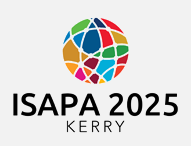Start Date
17-6-2025 9:00 AM
End Date
17-6-2025 10:30 AM
Abstract
Introduction
Children and adolescents with visual impairments face barriers in physical education (PE), leading to frustration, exclusion, and reduced long-term participation (Haegele et al., 2019). The "Smart Sport Assistance" project tackled these challenges by developing assistive systems to enhance inclusion and active participation by providing intelligent auditory, haptic and visual feedback (cf. Baca, 2025) during physical activities on where people or sports equipment are located.
Methodology
The project adopted an Open Innovation approach, incorporating user-centric design principles. Students with and without visual impairments were involved throughout the process to identify barriers, co-develop solutions, and test prototypes. Multi-disciplinary teams including technical school partners and experts collaborated on creating assistive devices such as enhanced audible signaling systems and computer vision-based swimming aids. The "Sensitization Box" (SB), a tool for educational awareness, was developed to support teacher training and foster empathy among non-impaired peers.
Results
Outcomes include prototypes addressing specific user needs, such as a re-engineered bell ball and sensory feedback systems for spatial navigation during activities. Pilot tests with target groups have shown increased engagement, reduced frustration, and enhanced inclusivity. Additionally, the SB, which comprises a final selection of four revisioned prototype systems along with teaching materials for PE, was implemented.
Conclusions
The findings of the pilot studies reveal the potential of user-centered technological innovation to overcome participation barriers in PE for visually impaired students. By fostering collaboration between students, educators, and researchers, it empowered the target group. Future dissemination efforts will make materials and findings freely available to encourage broader implementation.
Recommended Citation
Kornfeind, Philipp and Baca, Arnold, "Enhancing Physical Activity Participation for Students with Visual Impairments through Smart Sport Assistance Systems" (2025). International Symposium of Adapted Physical Activity and International Symposium on Physical Activity and Visual Impairment and Deafblindness. 7.
https://sword.mtu.ie/isapa/2025/day2/7
Enhancing Physical Activity Participation for Students with Visual Impairments through Smart Sport Assistance Systems
Introduction
Children and adolescents with visual impairments face barriers in physical education (PE), leading to frustration, exclusion, and reduced long-term participation (Haegele et al., 2019). The "Smart Sport Assistance" project tackled these challenges by developing assistive systems to enhance inclusion and active participation by providing intelligent auditory, haptic and visual feedback (cf. Baca, 2025) during physical activities on where people or sports equipment are located.
Methodology
The project adopted an Open Innovation approach, incorporating user-centric design principles. Students with and without visual impairments were involved throughout the process to identify barriers, co-develop solutions, and test prototypes. Multi-disciplinary teams including technical school partners and experts collaborated on creating assistive devices such as enhanced audible signaling systems and computer vision-based swimming aids. The "Sensitization Box" (SB), a tool for educational awareness, was developed to support teacher training and foster empathy among non-impaired peers.
Results
Outcomes include prototypes addressing specific user needs, such as a re-engineered bell ball and sensory feedback systems for spatial navigation during activities. Pilot tests with target groups have shown increased engagement, reduced frustration, and enhanced inclusivity. Additionally, the SB, which comprises a final selection of four revisioned prototype systems along with teaching materials for PE, was implemented.
Conclusions
The findings of the pilot studies reveal the potential of user-centered technological innovation to overcome participation barriers in PE for visually impaired students. By fostering collaboration between students, educators, and researchers, it empowered the target group. Future dissemination efforts will make materials and findings freely available to encourage broader implementation.

